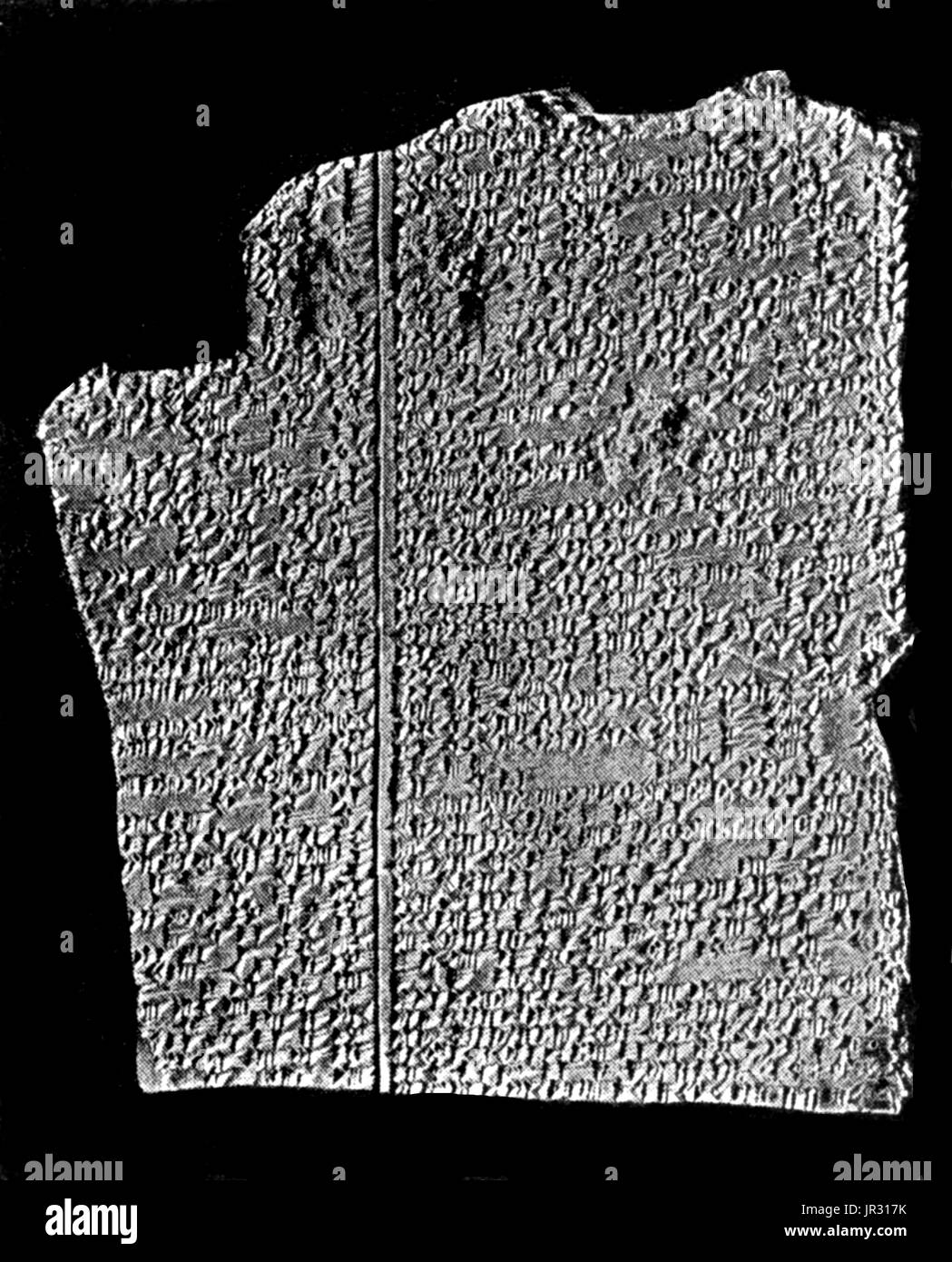The Amarna tablets are an archive, written on clay tablets, primarily consisting of diplomatic correspondence between the Egyptian administration and its representatives in Canaan and Amurru during the New Kingdom. The Amarna letters are unusual in Egyptological research, because they are mostly written in Akkadian cuneiform, the writing system of ancient Mesopotamia, rather than that of ancient Egypt. The written correspondence spans a period of at most thirty years. The Amarna letters are of great significance for biblical studies as well as Semitic linguistics, since they shed light on the

Image details
Contributor:
Science History Images / Alamy Stock PhotoImage ID:
JR317KFile size:
32.4 MB (1.2 MB Compressed download)Releases:
Model - no | Property - noDo I need a release?Dimensions:
3026 x 3747 px | 25.6 x 31.7 cm | 10.1 x 12.5 inches | 300dpiPhotographer:
Photo ResearchersMore information:
This image could have imperfections as it’s either historical or reportage.
The Amarna tablets are an archive, written on clay tablets, primarily consisting of diplomatic correspondence between the Egyptian administration and its representatives in Canaan and Amurru during the New Kingdom. The Amarna letters are unusual in Egyptological research, because they are mostly written in Akkadian cuneiform, the writing system of ancient Mesopotamia, rather than that of ancient Egypt. The written correspondence spans a period of at most thirty years. The Amarna letters are of great significance for biblical studies as well as Semitic linguistics, since they shed light on the culture and language of the Canaanite peoples in pre-biblical times. The letters, though written in Akkadian, are heavily colored by the mother tongue of their writers, who spoke an early form of Canaanite, the language family which would later evolve into its daughter languages, Hebrew and Phoenician.